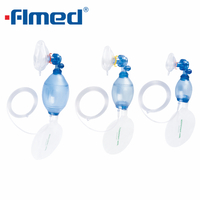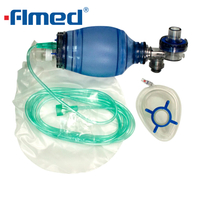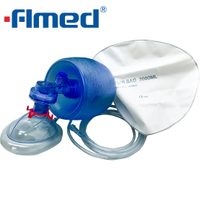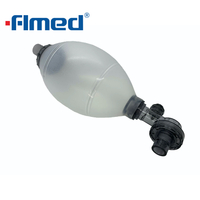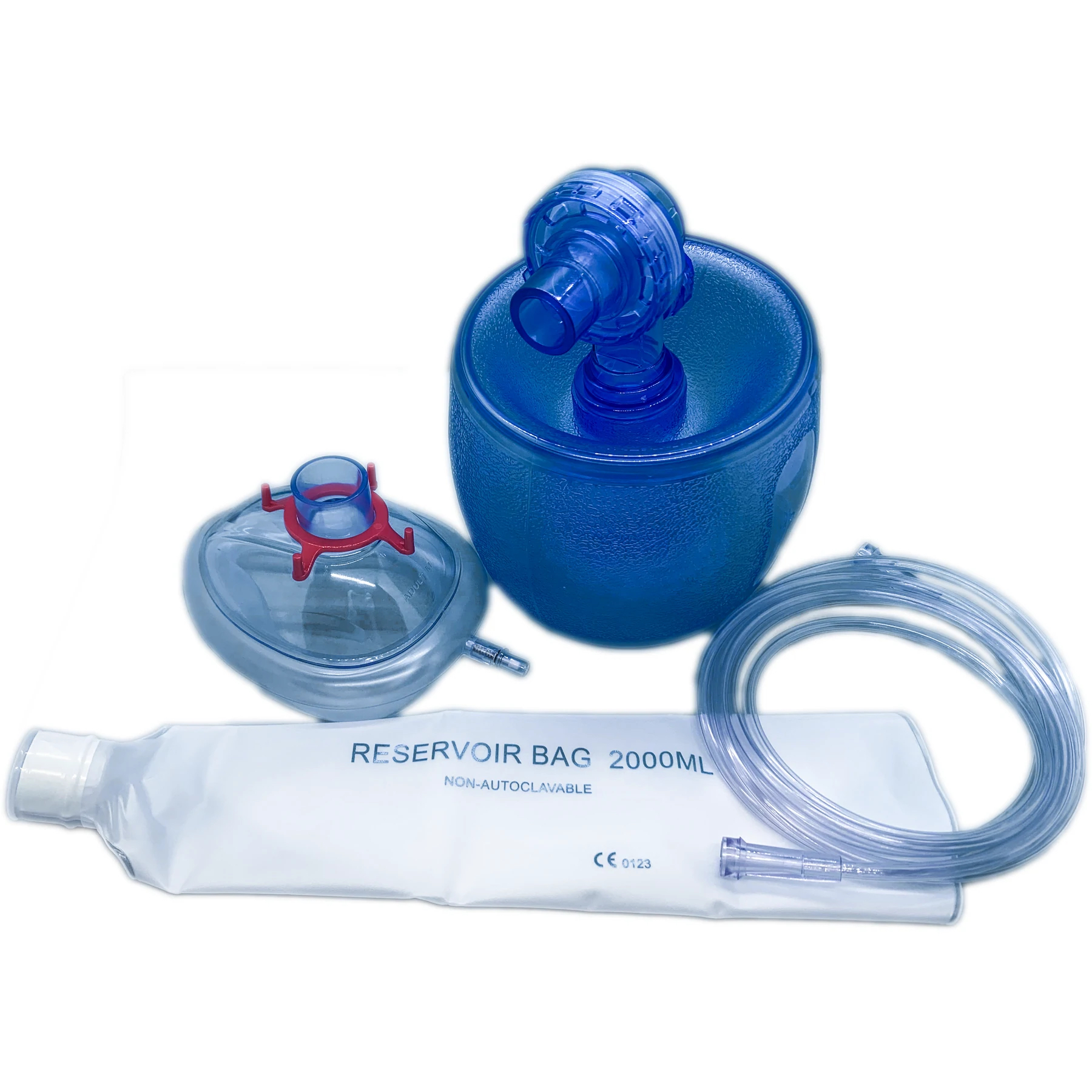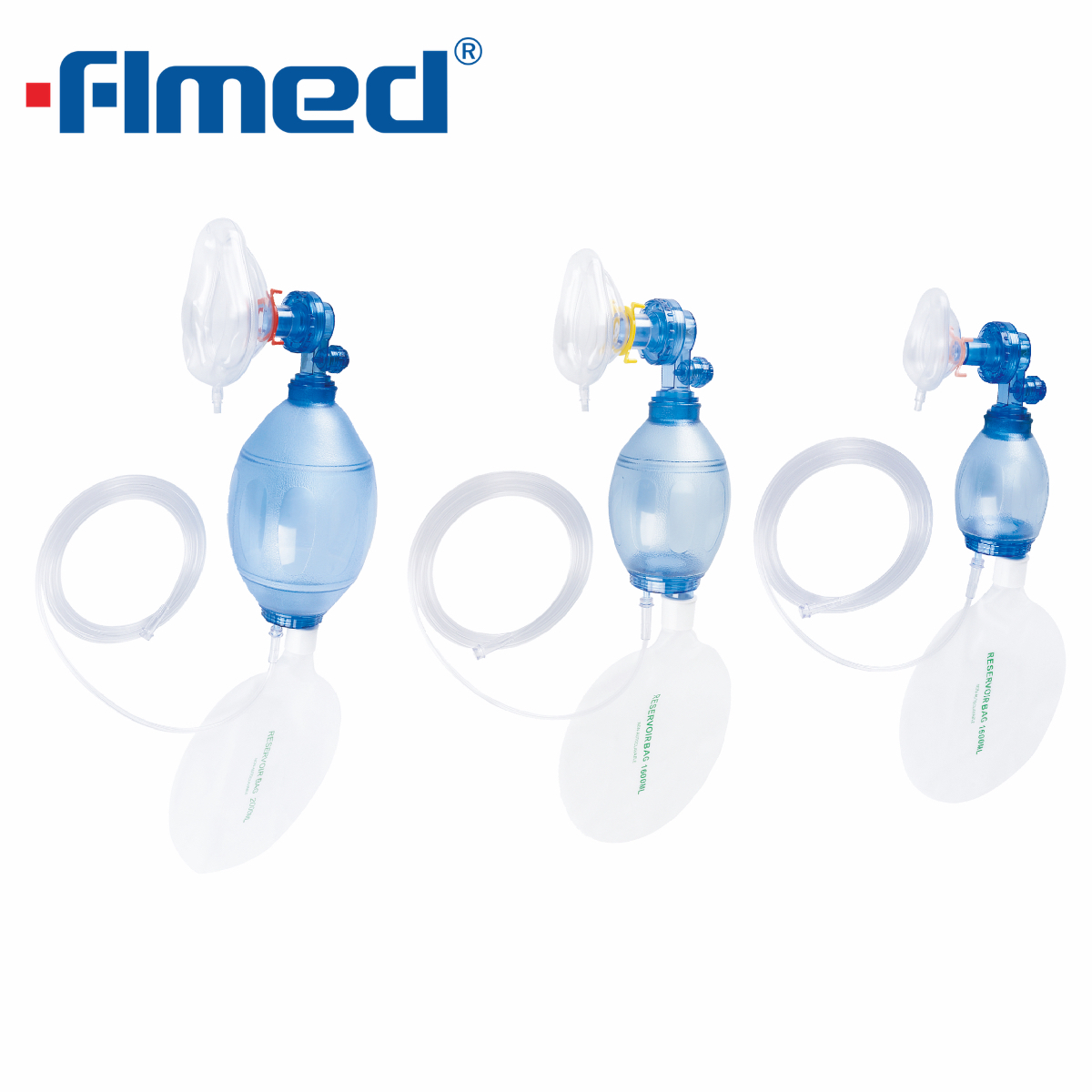
When a person experiences sudden respiratory failure or cardiac arrest, immediate intervention is essential to restore breathing and circulation. One of the most critical tools in these situations is the resuscitator. A resuscitator, also known as a bag-valve-mask (BVM), is an emergency medical device designed to provide artificial ventilation to patients who are not breathing or breathing inadequately. This device is essential in saving lives by ensuring the patient receives oxygen until normal breathing is restored or further medical intervention is provided.
Basic Components of a Resuscitator: How It Works Together
A resuscitator consists of several key components that work in unison to deliver oxygen to the patient. These components include the mask, bag, valve, and oxygen tubing, each playing a vital role in ensuring the patient receives the necessary respiratory support. Understanding how these parts work together is essential for effective resuscitation.
1. The Mask
The mask is designed to cover the patient's nose and mouth, creating a seal to allow air to flow into the lungs. It is typically made of a soft, flexible material, such as silicone or rubber, to ensure comfort and a secure fit on the patient's face. The mask is sized according to the patient's age and facial structure, with pediatric and adult sizes available. The mask should be pressed tightly enough to prevent air leakage but not cause excessive discomfort or injury.
2. The Bag
The bag, or self-expanding bag, is the part of the resuscitator that holds the air or oxygen and delivers it into the patient's lungs. The bag is typically made of a flexible, durable material and is designed to expand and contract with pressure. The bag is manually squeezed or mechanically compressed to push air into the patient's lungs. The size of the bag varies based on the patient's size, with larger bags for adults and smaller ones for pediatric patients.
3. The Valve
The one-way valve is a critical component of the resuscitator, as it ensures that air or oxygen is delivered only to the patient's lungs and not allowed to escape. This valve allows for positive pressure ventilation, ensuring that air flows into the lungs when the bag is squeezed but prevents exhaled air from being re-breathed by the person giving the ventilation. The valve also ensures that the patient's carbon dioxide is expelled with each exhalation.
4. Oxygen Tubing and Oxygen Source
Resuscitators can be connected to an oxygen source, such as a wall oxygen supply or an oxygen tank, using oxygen tubing. The tubing is attached to the resuscitator's valve or bag to provide pure oxygen or a mixture of air and oxygen. The amount of oxygen supplied can be adjusted based on the needs of the patient. The goal is to ensure that the patient receives enough oxygen to restore normal blood oxygen levels and prevent tissue damage.
![resuscitator resuscitator]()
How a Resuscitator Works: The Operating Principle
The operating principle behind a resuscitator is simple yet crucial: to deliver air or oxygen into the lungs of an individual who is not breathing or has insufficient respiratory function. By using manual pressure or mechanical force, a resuscitator can push air into the lungs, helping to re-establish breathing and provide oxygen to vital organs. The key to a successful resuscitation is to ensure that the patient receives a sufficient volume of air or oxygen without causing harm.
1. Manual Resuscitation
In most emergency situations, resuscitation is carried out manually by a trained healthcare provider or a first responder. The individual squeezes the self-expanding bag, forcing air or oxygen into the patient’s lungs. The bag is typically squeezed in short, controlled bursts, with the goal of delivering just enough air to inflate the lungs and restore normal breathing patterns. The person administering the resuscitation will continue to perform this action until normal breathing is restored, or further medical assistance is provided.
2. Mechanical Resuscitation
In some cases, a mechanical resuscitator may be used. These devices function similarly to manual resuscitators, but they automate the process of delivering air or oxygen. Mechanical resuscitators are commonly used in hospital settings and are designed to deliver controlled, consistent breaths to the patient without the need for manual intervention. These devices are especially useful for patients who require ongoing ventilation, such as during prolonged surgeries or in intensive care units.
Mechanical resuscitators are often equipped with adjustable settings that control the volume, pressure, and rate of airflow, ensuring that the patient receives optimal ventilation. These devices may also include features to monitor the patient's oxygen levels and breathing rate.
![resuscitator resuscitator]()
Manual vs. Mechanical Resuscitators: What's the Difference?
Both manual and mechanical resuscitators serve the same primary purpose of delivering artificial ventilation to patients. However, there are some distinct differences between the two types, including how they are used, their efficiency, and the situations in which they are most appropriate.
1. Manual Resuscitator
Usage: Manual resuscitators are primarily used by emergency medical personnel, first responders, and healthcare providers. They are ideal for emergency situations where immediate intervention is needed, such as in cardiac arrest, asthma attacks, or drowning incidents.
Control: The provider manually squeezes the bag to push air or oxygen into the patient’s lungs, making it necessary for the person administering the resuscitation to control the timing, volume, and force of the breaths.
Flexibility: Manual resuscitators are highly portable, lightweight, and versatile, which makes them suitable for use in a variety of settings, including ambulances, emergency rooms, or even at the scene of an accident.
Limitations: The main limitation of manual resuscitators is that they require human effort to function. In situations where the provider is exhausted, distracted, or otherwise unable to continue, the device may not function optimally.
2. Mechanical Resuscitator
Usage: Mechanical resuscitators are typically used in hospital settings where continuous ventilation is necessary, such as in operating rooms, intensive care units (ICU), and emergency departments. They are designed to automate the resuscitation process and reduce the workload for healthcare providers.
Control: Mechanical resuscitators offer more precise control over the volume, pressure, and rate of oxygen delivery. These devices can be adjusted to meet the specific needs of the patient, providing more consistent and reliable ventilation than manual resuscitators.
Efficiency: Mechanical devices are ideal for patients who require prolonged ventilation or those who cannot breathe independently for extended periods. They are particularly beneficial in long-duration surgeries or in situations where the provider is unable to perform manual ventilation.
Limitations: While mechanical resuscitators offer higher precision, they are larger, more complex, and typically require specialized training to use. They are not as portable or versatile as manual resuscitators.
Step-by-Step Process: How to Use a Resuscitator During CPR
In an emergency situation, providing immediate CPR using a resuscitator can save a patient’s life. Below is a step-by-step guide on how to use a resuscitator for cardiopulmonary resuscitation (CPR).
Step 1: Assess the Situation
Check the patient: Ensure that the patient is unresponsive and not breathing. If the patient is not breathing, call for emergency help immediately.
Step 2: Position the Mask
Place the mask over the patient's nose and mouth, ensuring a good seal. If using a manual resuscitator, make sure the mask fits properly to prevent air leakage.
Step 3: Squeeze the Bag
With the mask securely in place, squeeze the bag of the resuscitator to deliver air into the patient’s lungs. Ensure that you deliver a sufficient volume of air, but avoid excessive pressure that could damage the lungs.
Step 4: Check for Chest Rise
As you squeeze the bag, watch for the patient's chest to rise. This indicates that air is entering the lungs. Continue to squeeze the bag in a rhythmic pattern, delivering rescue breaths approximately every 30 compressions if performing CPR.
Step 5: Continue until Help Arrives
Continue administering CPR with the resuscitator until emergency medical services arrive or the patient begins to breathe on their own.
Conclusion:
A resuscitator is an essential tool for saving lives in emergency situations where a person's breathing has stopped or is insufficient. By providing artificial ventilation, resuscitators help restore normal breathing and prevent oxygen deprivation, which can lead to irreversible damage to vital organs. Whether manually operated or mechanically automated, resuscitators are critical in ensuring that patients receive the life-saving oxygen they need until further medical intervention can be provided.
For healthcare professionals and emergency responders, understanding how to properly use a resuscitator and recognizing when to switch from manual to mechanical support is essential. Regular training and proper equipment maintenance are key to ensuring optimal outcomes in life-threatening situations.

 English
English
